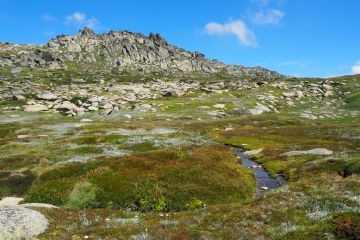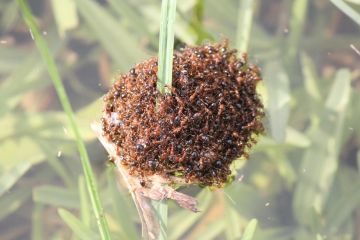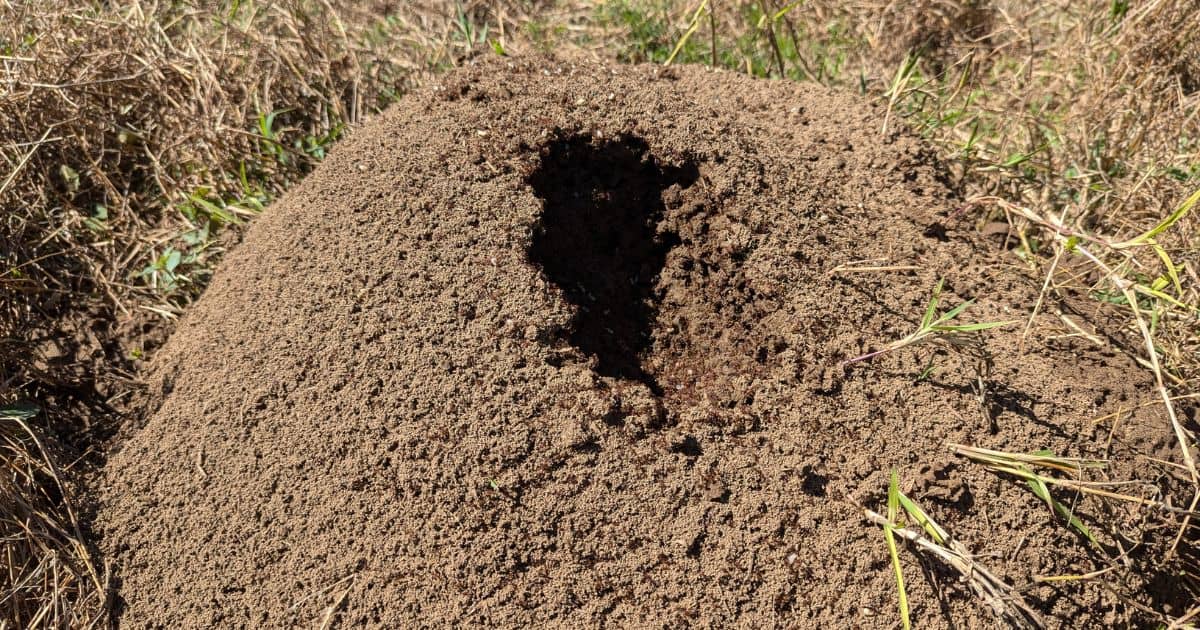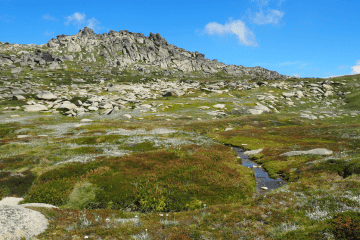
Celebrating a legacy of leadership: Invasive Species Council CEO Andrew Cox announces departure
The Invasive Species Council today announces that CEO, Andrew Cox will be departing from his role at the end of February 2025.

The Invasive Species Council today announces that CEO, Andrew Cox will be departing from his role at the end of February 2025.

The Invasive Species Council welcomes the announcement by newly elected Independent MLA Thomas Emerson that the Australian Capital Territory government will increase the number of national parks rangers to work on environmental conservation and invasive species management.

The Invasive Species Council expresses disappointment following the Queensland government’s unexpected withdrawal from what was shaping up to be a unanimous endorsement of an ambitious national plan to reduce the impact of feral cats on native wildlife.

Would you eat carp, deer or even camel? Eat the Invaders, a new ABC documentary series set to air in the new year and presented by Tony Armstrong, will invite Australians to reimagine invasive species as a ‘tasty solution’.

The Invasive Species Council welcomes the Victorian tribunal’s ruling against pro-brumby activists for the appalling racial vilification of Yorta Yorta woman, Aunty Monica Morgan.

With Christmas and school holidays just around the corner, families and holidaymakers in northern NSW and South-East Queensland are being urged to take action against one of Australia’s most destructive pests. The Invasive Species Council is calling on local communities to join the fight against fire ants and make a lasting impact this holiday season.

The Invasive Species Council is warning that an ambitious program to eradicate feral cats from the Dudley Peninsula on Kangaroo Island is being undermined by an outdated law which stops feral cats being killed within 1km of a residential dwelling.

The Invasive Species Council and Cedar Grove Landcare Group are sounding the alarm over a huge build-up of fire ant infestations along the Logan River, southwest of Brisbane.

The Invasive Species Council has welcomed the early commitment to improve fire ant management by Queensland’s new Minister for Primary Industries, Tony Perrett.

The South Australian government has today unveiled a bold new plan to eradicate feral deer from Adelaide’s outskirts, but its success hinges on securing additional funding.

New analysis from the Invasive Species Council has found roaming pet cats are estimated to have killed over 62 million of Sydney’s native animals this year.

Fire ants have been detected in northern New South Wales after a turf delivery from southeast Queensland, marking the state’s first incursion in nearly a year. The previous detection occurred in January, when a nest was found in Wardell, just south of Ballina.

The NSW Upper House has today released its report following an inquiry into the aerial shooting of wild horses in Kosciuszko National Park.

For the first time in over 2 decades, significant numbers of feral horses have been removed from the Blue Mountains, following a landmark aerial control program undertaken by the NSW National Parks and Wildlife Service (NPWS).

Extinctions are holes torn in the fabric of life, and Australia is ragged from having so many species ripped out. This report examines the causes of modern extinctions in Australia to find that invasive species have caused the vast majority of losses since 1960.

The Invasive Species Council today announces that CEO, Andrew Cox will be departing from his role at the end of February 2025.

The Invasive Species Council welcomes the announcement by newly elected Independent MLA Thomas Emerson that the Australian Capital Territory government will increase the number of national parks rangers to work on environmental conservation and invasive species management.

The Invasive Species Council expresses disappointment following the Queensland government’s unexpected withdrawal from what was shaping up to be a unanimous endorsement of an ambitious national plan to reduce the impact of feral cats on native wildlife.

Would you eat carp, deer or even camel? Eat the Invaders, a new ABC documentary series set to air in the new year and presented by Tony Armstrong, will invite Australians to reimagine invasive species as a ‘tasty solution’.

The Invasive Species Council welcomes the Victorian tribunal’s ruling against pro-brumby activists for the appalling racial vilification of Yorta Yorta woman, Aunty Monica Morgan.

With Christmas and school holidays just around the corner, families and holidaymakers in northern NSW and South-East Queensland are being urged to take action against one of Australia’s most destructive pests. The Invasive Species Council is calling on local communities to join the fight against fire ants and make a lasting impact this holiday season.

The Invasive Species Council is warning that an ambitious program to eradicate feral cats from the Dudley Peninsula on Kangaroo Island is being undermined by an outdated law which stops feral cats being killed within 1km of a residential dwelling.

The Invasive Species Council and Cedar Grove Landcare Group are sounding the alarm over a huge build-up of fire ant infestations along the Logan River, southwest of Brisbane.

The Invasive Species Council has welcomed the early commitment to improve fire ant management by Queensland’s new Minister for Primary Industries, Tony Perrett.

The South Australian government has today unveiled a bold new plan to eradicate feral deer from Adelaide’s outskirts, but its success hinges on securing additional funding.

New analysis from the Invasive Species Council has found roaming pet cats are estimated to have killed over 62 million of Sydney’s native animals this year.

Fire ants have been detected in northern New South Wales after a turf delivery from southeast Queensland, marking the state’s first incursion in nearly a year. The previous detection occurred in January, when a nest was found in Wardell, just south of Ballina.

The NSW Upper House has today released its report following an inquiry into the aerial shooting of wild horses in Kosciuszko National Park.

For the first time in over 2 decades, significant numbers of feral horses have been removed from the Blue Mountains, following a landmark aerial control program undertaken by the NSW National Parks and Wildlife Service (NPWS).

Extinctions are holes torn in the fabric of life, and Australia is ragged from having so many species ripped out. This report examines the causes of modern extinctions in Australia to find that invasive species have caused the vast majority of losses since 1960.

The Invasive Species Council today announces that CEO, Andrew Cox will be departing from his role at the end of February 2025.

The Invasive Species Council welcomes the announcement by newly elected Independent MLA Thomas Emerson that the Australian Capital Territory government will increase the number of national parks rangers to work on environmental conservation and invasive species management.

The Invasive Species Council expresses disappointment following the Queensland government’s unexpected withdrawal from what was shaping up to be a unanimous endorsement of an ambitious national plan to reduce the impact of feral cats on native wildlife.

Would you eat carp, deer or even camel? Eat the Invaders, a new ABC documentary series set to air in the new year and presented by Tony Armstrong, will invite Australians to reimagine invasive species as a ‘tasty solution’.

The Invasive Species Council welcomes the Victorian tribunal’s ruling against pro-brumby activists for the appalling racial vilification of Yorta Yorta woman, Aunty Monica Morgan.

With Christmas and school holidays just around the corner, families and holidaymakers in northern NSW and South-East Queensland are being urged to take action against one of Australia’s most destructive pests. The Invasive Species Council is calling on local communities to join the fight against fire ants and make a lasting impact this holiday season.

The Invasive Species Council is warning that an ambitious program to eradicate feral cats from the Dudley Peninsula on Kangaroo Island is being undermined by an outdated law which stops feral cats being killed within 1km of a residential dwelling.

The Invasive Species Council and Cedar Grove Landcare Group are sounding the alarm over a huge build-up of fire ant infestations along the Logan River, southwest of Brisbane.

The Invasive Species Council has welcomed the early commitment to improve fire ant management by Queensland’s new Minister for Primary Industries, Tony Perrett.

The South Australian government has today unveiled a bold new plan to eradicate feral deer from Adelaide’s outskirts, but its success hinges on securing additional funding.

New analysis from the Invasive Species Council has found roaming pet cats are estimated to have killed over 62 million of Sydney’s native animals this year.

Fire ants have been detected in northern New South Wales after a turf delivery from southeast Queensland, marking the state’s first incursion in nearly a year. The previous detection occurred in January, when a nest was found in Wardell, just south of Ballina.

The NSW Upper House has today released its report following an inquiry into the aerial shooting of wild horses in Kosciuszko National Park.

For the first time in over 2 decades, significant numbers of feral horses have been removed from the Blue Mountains, following a landmark aerial control program undertaken by the NSW National Parks and Wildlife Service (NPWS).

Extinctions are holes torn in the fabric of life, and Australia is ragged from having so many species ripped out. This report examines the causes of modern extinctions in Australia to find that invasive species have caused the vast majority of losses since 1960.
Get our blog the Feral Herald delivered to your inbox.
Our protected areas are being trashed, trampled, choked and polluted by an onslaught of invaders. Invasive species are already the overwhelming driver of our animal extinction rate, and are expected to cause 75 of the next 100 extinctions.
But you can help to turn this around and create a wildlife revival in Australia.
From numbats to night parrots, a tax-deductible donation today can help defend our wildlife against the threat of invasive weeds, predators, and diseases.
As the only national advocacy environment group dedicated to stopping this mega threat, your gift will make a big difference.
A silent crisis is unfolding across Australia. Every year, billions of native animals are hunted and killed by cats and foxes. Fire ants continue to spread and threaten human health. And the deadly strain of bird flu looms on the horizon. Your donation today will be used to put the invasive species threat in the media, make invasive species a government priority, ensure governments take rapid action to protect nature and our remarkable native wildlife from invasives-led extinction, death and destruction.
If you are having trouble submitting a form, please read this guide.
Please fill out the following form and one of our team will be in contact to assist as soon as possible. Please make sure to include any helpful information, such as the device you were using (computer, tablet or mobile phone) and if known, your browser (Mozilla Firefox, Chrome, Safari etc)
"*" indicates required fields
Dear Project Team,
[YOUR PERSONALISED MESSAGE WILL APPEAR HERE.]
I support the amendment to the Kosciuszko National Park Wild Horse Heritage Management Plan to allow our incredible National Parks staff to use aerial shooting as one method to rapidly reduce feral horse numbers. I want to see feral horse numbers urgently reduced in order to save the national park and our native wildlife that live there.
The current approach is not solving the problem. Feral horse numbers have rapidly increased in Kosciuszko National Park to around 18,000, a 30% jump in just the past 2 years. With the population so high, thousands of feral horses need to be removed annually to reduce numbers and stop our National Park becoming a horse paddock. Aerial shooting, undertaken humanely and safely by professionals using standard protocols, is the only way this can happen.
The government’s own management plan for feral horses states that ‘if undertaken in accordance with best practice, aerial shooting can have the lowest negative animal welfare impacts of all lethal control methods’.
This humane and effective practice is already used across Australia to manage hundreds of thousands of feral animals like horses, deer, pigs, and goats.
Trapping and rehoming of feral horses has been used in Kosciuszko National Park for well over a decade but has consistently failed to reduce the population, has delayed meaningful action and is expensive. There are too many feral horses in the Alps and not enough demand for rehoming for it to be relied upon for the reduction of the population.
Fertility control as a management tool is only effective for a small, geographically isolated, and accessible population of feral horses where the management outcome sought is to maintain the population at its current size. It is not a viable option to reduce the large and growing feral horse population in the vast and rugged terrain of Kosciuszko National Park.
Feral horses are trashing and trampling our sensitive alpine ecosystems and streams, causing the decline and extinction of native animals. The federal government’s Threatened Species Scientific Committee has stated that feral horses ‘may be the crucial factor that causes final extinction’ for 12 alpine species.
I recognise the sad reality that urgent and humane measures are necessary to urgently remove the horses or they will destroy the Snowies and the native wildlife that call the mountains home. I support a healthy national park where native species like the Corroboree Frog and Mountain Pygmy Possum can thrive.
Dear Project Team,
[YOUR PERSONALISED MESSAGE WILL APPEAR HERE.]
I support the amendment to the Kosciuszko National Park Wild Horse Heritage Management Plan to allow our incredible National Parks staff to use aerial shooting as one method to rapidly reduce feral horse numbers. I want to see feral horse numbers urgently reduced in order to save the national park and our native wildlife that live there.
The current approach is not solving the problem. Feral horse numbers have rapidly increased in Kosciuszko National Park to around 18,000, a 30% jump in just the past 2 years. With the population so high, thousands of feral horses need to be removed annually to reduce numbers and stop our National Park becoming a horse paddock. Aerial shooting, undertaken humanely and safely by professionals using standard protocols, is the only way this can happen.
The government’s own management plan for feral horses states that ‘if undertaken in accordance with best practice, aerial shooting can have the lowest negative animal welfare impacts of all lethal control methods’.
This humane and effective practice is already used across Australia to manage hundreds of thousands of feral animals like horses, deer, pigs, and goats.
Trapping and rehoming of feral horses has been used in Kosciuszko National Park for well over a decade but has consistently failed to reduce the population, has delayed meaningful action and is expensive. There are too many feral horses in the Alps and not enough demand for rehoming for it to be relied upon for the reduction of the population.
Fertility control as a management tool is only effective for a small, geographically isolated, and accessible population of feral horses where the management outcome sought is to maintain the population at its current size. It is not a viable option to reduce the large and growing feral horse population in the vast and rugged terrain of Kosciuszko National Park.
Feral horses are trashing and trampling our sensitive alpine ecosystems and streams, causing the decline and extinction of native animals. The federal government’s Threatened Species Scientific Committee has stated that feral horses ‘may be the crucial factor that causes final extinction’ for 12 alpine species.
I recognise the sad reality that urgent and humane measures are necessary to urgently remove the horses or they will destroy the Snowies and the native wildlife that call the mountains home. I support a healthy national park where native species like the Corroboree Frog and Mountain Pygmy Possum can thrive.